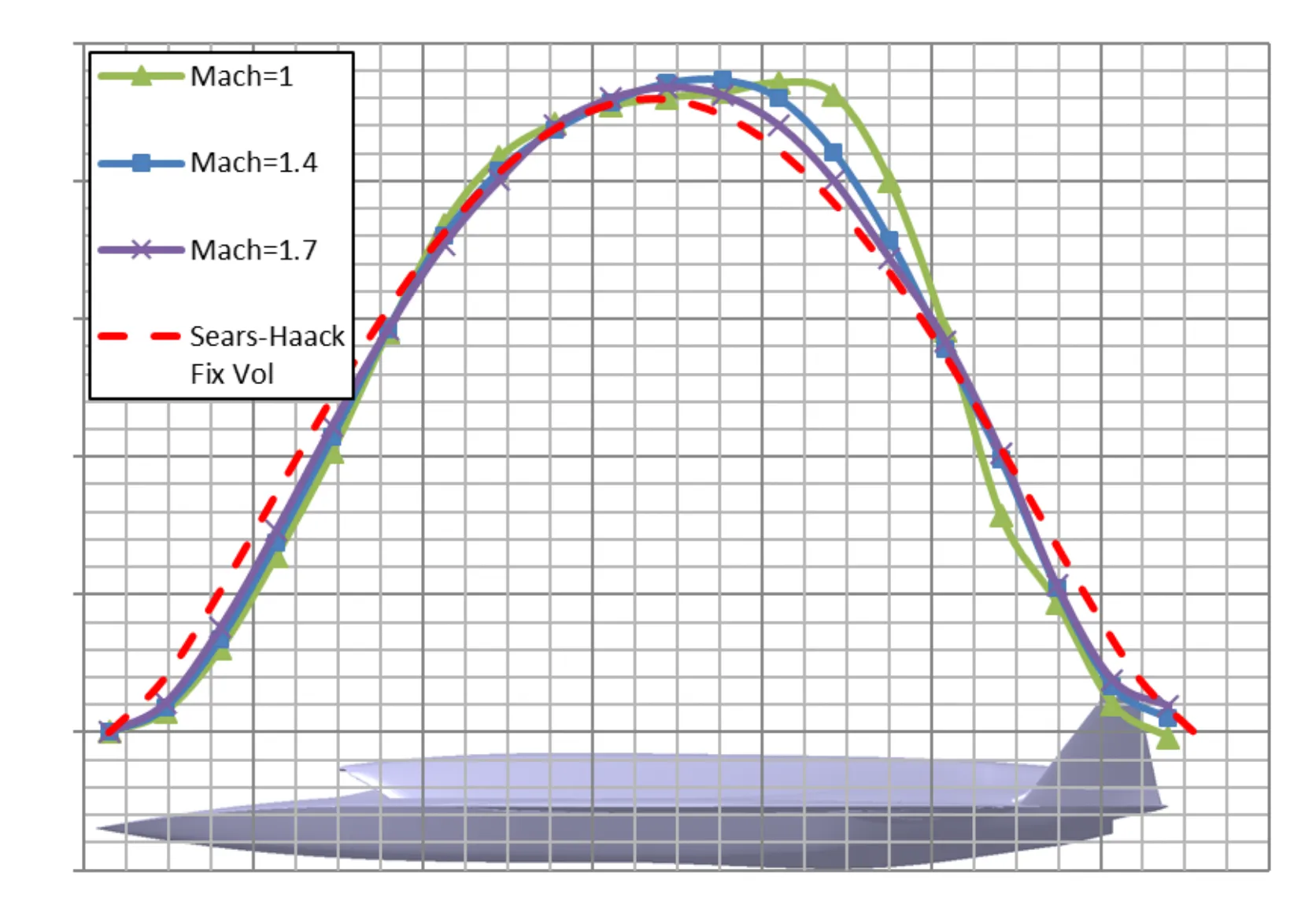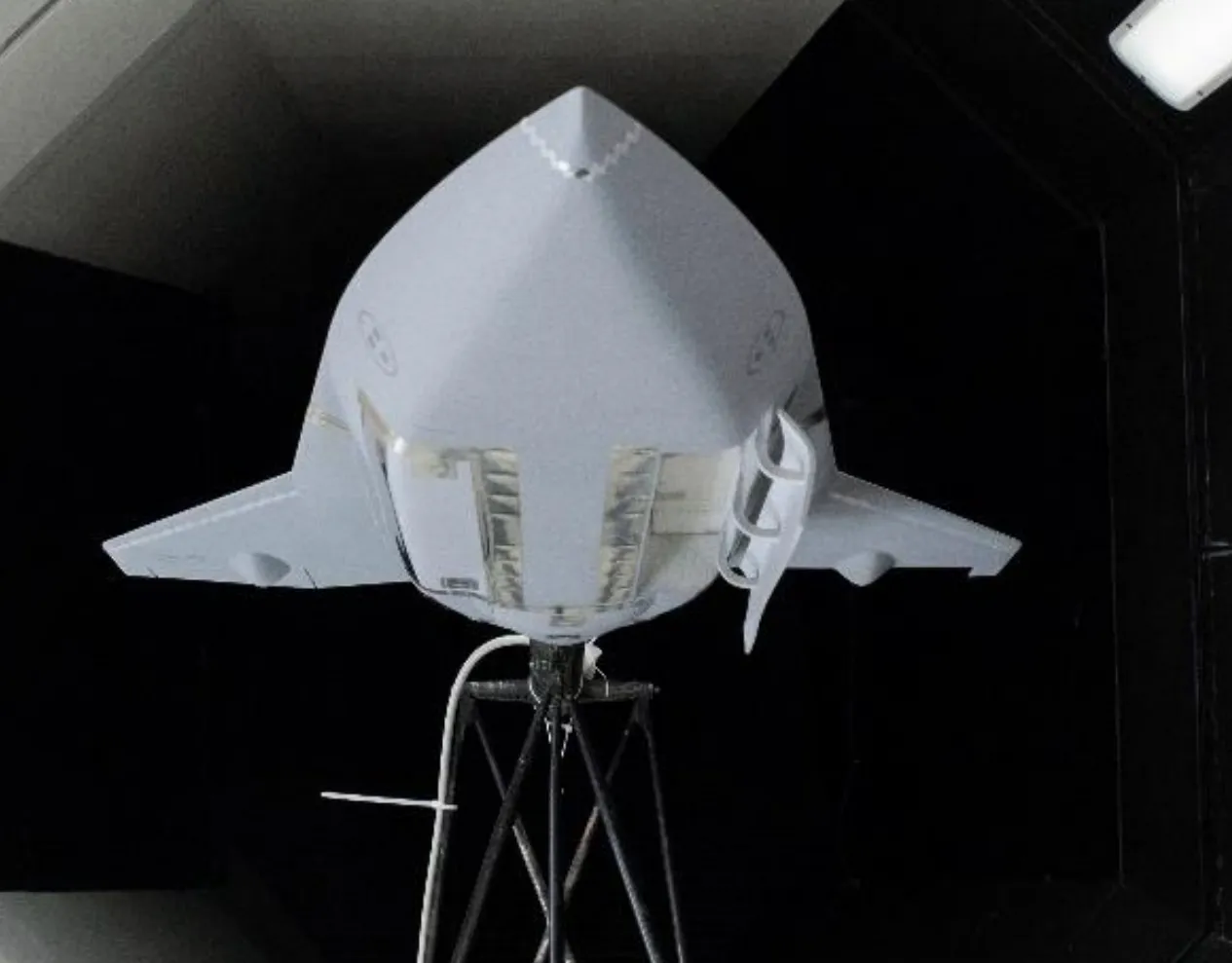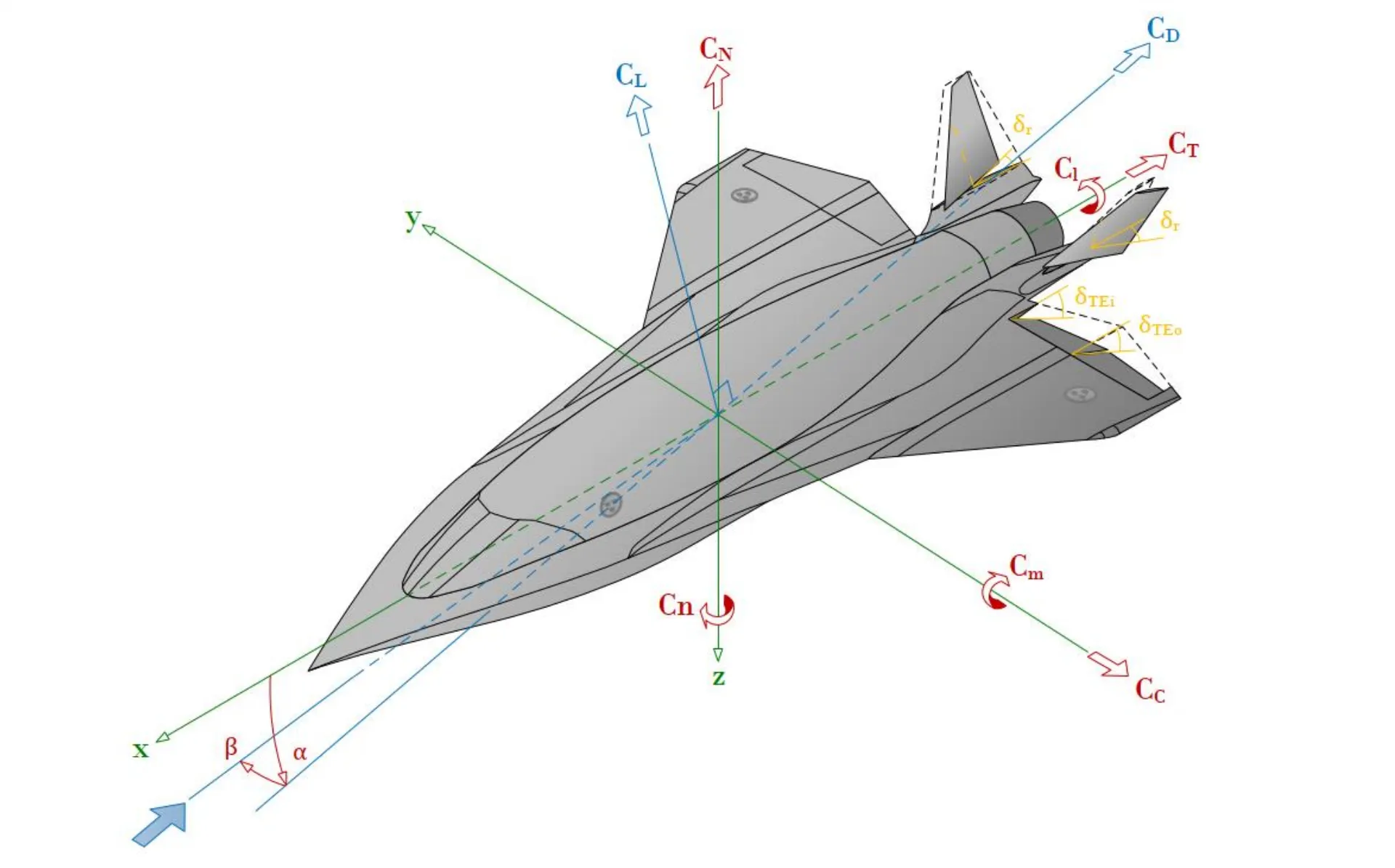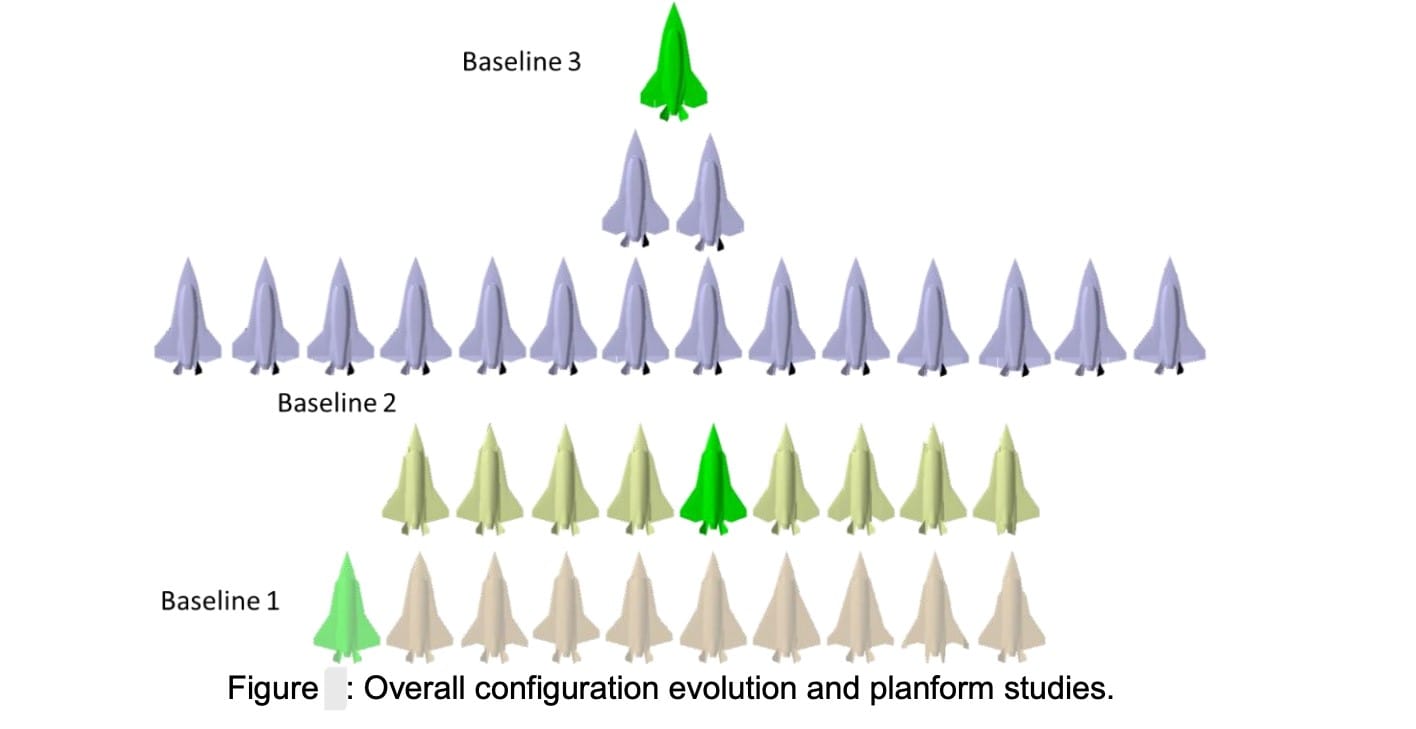Saab’s Supersonic Stealth Drone: Revolutionizing Combat Aviation
Characteristic of stealth aircraft, the drone incorporates outward-canted vertical fins mounted on booms extending from either side of the rear fuselage, with no traditional horizontal tail surfaces present.

Introduction
In the realm of military aviation, innovation is the key to maintaining superiority on the battlefield. Saab, a prominent European aerospace company, has been quietly revolutionizing the field with its groundbreaking concept for a supersonic, stealthy loyal wingman drone. Unveiled as part of the Future Combat Air System (FCAS) program, Saab’s concept drone represents a significant leap forward in unmanned aerial vehicle (UAV) technology, promising to redefine the dynamics of modern warfare.
Saab's Stealthy 'Loyal Wingman'
Saab is developing a fast and hard-to-detect drone known as the 'loyal wingman.' While the project has been funded by the company for some time, it has only recently gained attention. This development aligns with Saab's role as an active developer of unmanned systems in Europe, hinting at what the company may offer in the future.
Saab #FCAS Unmanned supersonic 'Loyal Wingman' stealth concept. Focus: High-speed BVR. Wind tunnel tests Dec 2021.
— Gripen News (@GripenNews) February 7, 2024
Internally funded. Time reduced through additive manufacturing & @KTHuniversity wind tunnel. Costs down by 90%. Fin-less version also tested. Pics: Saab AB, ICAS 22 pic.twitter.com/AhFhjLGd5b
Images of the concept drone, part of Saab’s Future Combat Air System (FCAS) program, have surfaced on social media. It's important to note that the FCAS acronym is also used by competing British and pan-European initiatives focused on future air combat, each centered around manned fighters. Adding to the complexity, Saab had previously collaborated with the United Kingdom on its FCAS program, which we will discuss further.
A captivating series of images emerged showcasing wind-tunnel trials of a scaled model representing the Saab Loyal Wingman drone, conducted in December 2021.
Diverging from conventional designs, this drone appears finely tuned for high-speed performance, operating within the supersonic realm while maintaining a low observability profile. Its design features a streamlined blend of wing and body, accentuated by a distinct chine tracing the arrow-like front edges. Noteworthy are the cropped swept wings, adorned with prominent sawteeth along the trailing edges, and equipped with exceptionally large control surfaces. The fuselage, meticulously crafted, exhibits area rule optimization aimed at enhancing supersonic efficiency.
Innovative Feature of Loyal Wingman
In addition to its sleek design, the concept boasts a single engine, supplied by a discreet dorsal air intake positioned above the forward fuselage, although this feature was concealed during wind tunnel model assessments. While the nozzle area on the model may not currently exhibit stealth characteristics, potential future refinements are conceivable, a common occurrence in the evolution of low-observable designs. Alternatively, the lack of detail on the nozzle could be attributed to its perceived insignificance for the wind tunnel trials. Nevertheless, it remains relatively concealed within the empennage, offering partial line-of-sight coverage from select angles.

Characteristic of stealth aircraft, the drone incorporates outward-canted vertical fins mounted on booms extending from either side of the rear fuselage, with no traditional horizontal tail surfaces present.
Loyal Wingman Model Analysis
Upon examination below, it becomes apparent that the drone design prioritizes ample internal space for weapon storage. Extending along either side of the fuselage are lengthy storage bays, cleverly concealed beneath sizable, single-piece doors.

Further insights into the model reveal the incorporation of traditional wheeled tricycle landing gear, seamlessly retracting into the fuselage for streamlined operation.
The inception of Saab's loyal wingman concept dates back to at least September 2022, when its unveiling occurred during a presentation at the 33rd Congress of the International Council of the Aeronautical Sciences (ICAS) held in Stockholm, Sweden's capital city.
Advancing Aerodynamic Development
In the early stages of design, significant attention was devoted to advancing the aerodynamic development of a supersonic, stealthy loyal wingman concept. This endeavor involved a blend of wind tunnel testing and computer simulations aimed at refining the aircraft's performance characteristics. Saab's approach emphasized expediting the design process, leveraging various Computational Fluid Dynamics tools and wind tunnel testing alongside extensive employment of additive manufacturing techniques. Additive manufacturing, commonly known as 3D printing, facilitated the creation of precise geometric shapes crucial for the aerodynamic optimization of the loyal wingman concept.

According to the Saab paper, their Future Combat Air System (FCAS) initiative entailed a continuous exploration of new concepts and assessment of their operational efficacy across diverse scenarios. Notably, the supersonic, stealthy loyal wingman design had progressed significantly compared to other concepts. While the paper primarily delves into the methodologies behind rapid and cost-effective aerodynamic development, it also offers intriguing insights into the loyal wingman's actual design, shedding light on its innovative features and capabilities.
Balancing Stealth and Speed
The design philosophy behind the Saab Loyal Wingman concept prioritizes low radar signature, high speed, and the ability to engage in beyond visual range air-to-air missions. Achieving this balance proved challenging, as the pursuit of low supersonic drag conflicted with the desire for internal weapon bays, typically associated with a broader layout. The aerodynamic evolution involved modifications to the wing planform, as depicted in Figure below, showcasing a progression from initial variations towards refined shapes.

This iterative process wasn't solely driven by aerodynamic considerations but also by factors such as radar signature, structural layout, and internal packaging requirements, highlighting the multidimensional nature of the design endeavor. Ultimately, the successful execution of wind tunnel testing within a constrained timeframe and budget underscored the feasibility of aerodynamic development activities, marking a significant milestone in Saab's project initiation activities.
Future of Saab's Loyal Wingman and Swedish Combat Aircraft Requirements
Doubts persist regarding the overarching status of the Saab Loyal Wingman, Saab FCAS, and the evolving combat aircraft needs within the Swedish Air Force, particularly highlighted by the presence of the Swedish Air Force's emblem on the wind-tunnel model. In 2019, Saab embarked on the UK's Team Tempest future combat aircraft program, alongside Italy's Leonardo, aiming to pool resources and expertise. However, Sweden's subsequent withdrawal from the Tempest program in November 2023, coupled with its absence from the Global Combat Air Program (GCAP), raises questions about its future involvement. Potential scenarios include Sweden rejoining GCAP through Saab or aligning with the pan-European FCAS initiative.
Both GCAP and FCAS aim to incorporate various advanced technologies, including loyal wingman drones and next-generation air-launched weaponry, alongside enhancements in sensor capabilities, propulsion systems, and communication infrastructure. Despite this, specific details on loyal wingman drones remain scarce, with no indication of a supersonic drone akin to Saab's exploration in current discussions.
Conclusion
In conclusion, Saab’s concept for a supersonic, stealthy loyal wingman drone represents a quantum leap in combat aviation. By blending state-of-the-art technology with operational ingenuity, Saab has unlocked a new paradigm of warfare, where unmanned systems play a pivotal role in shaping the battlefield. As nations around the world embrace the future of aerial warfare, Saab stands ready to lead the charge, ushering in a new era of dominance in the skies.





